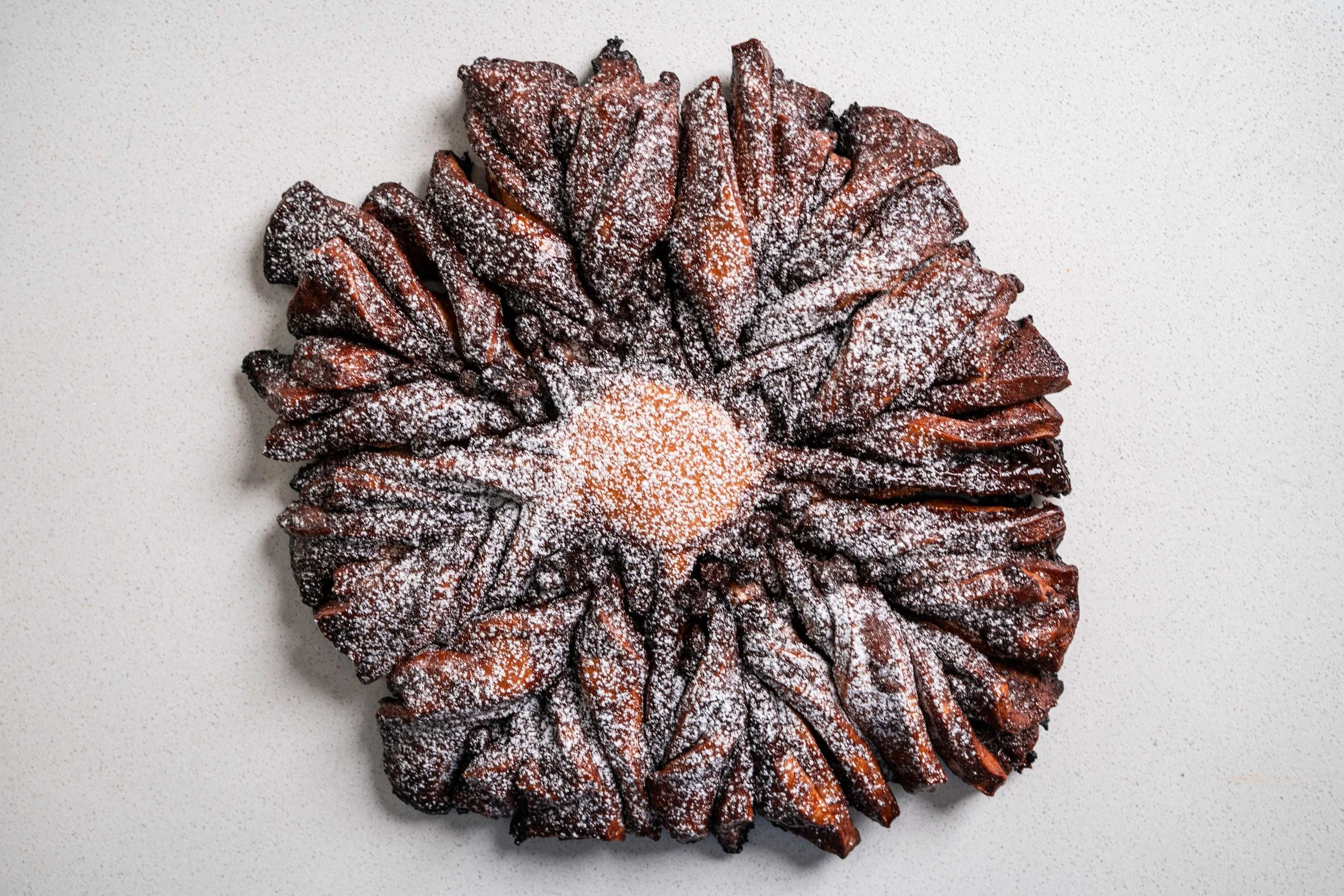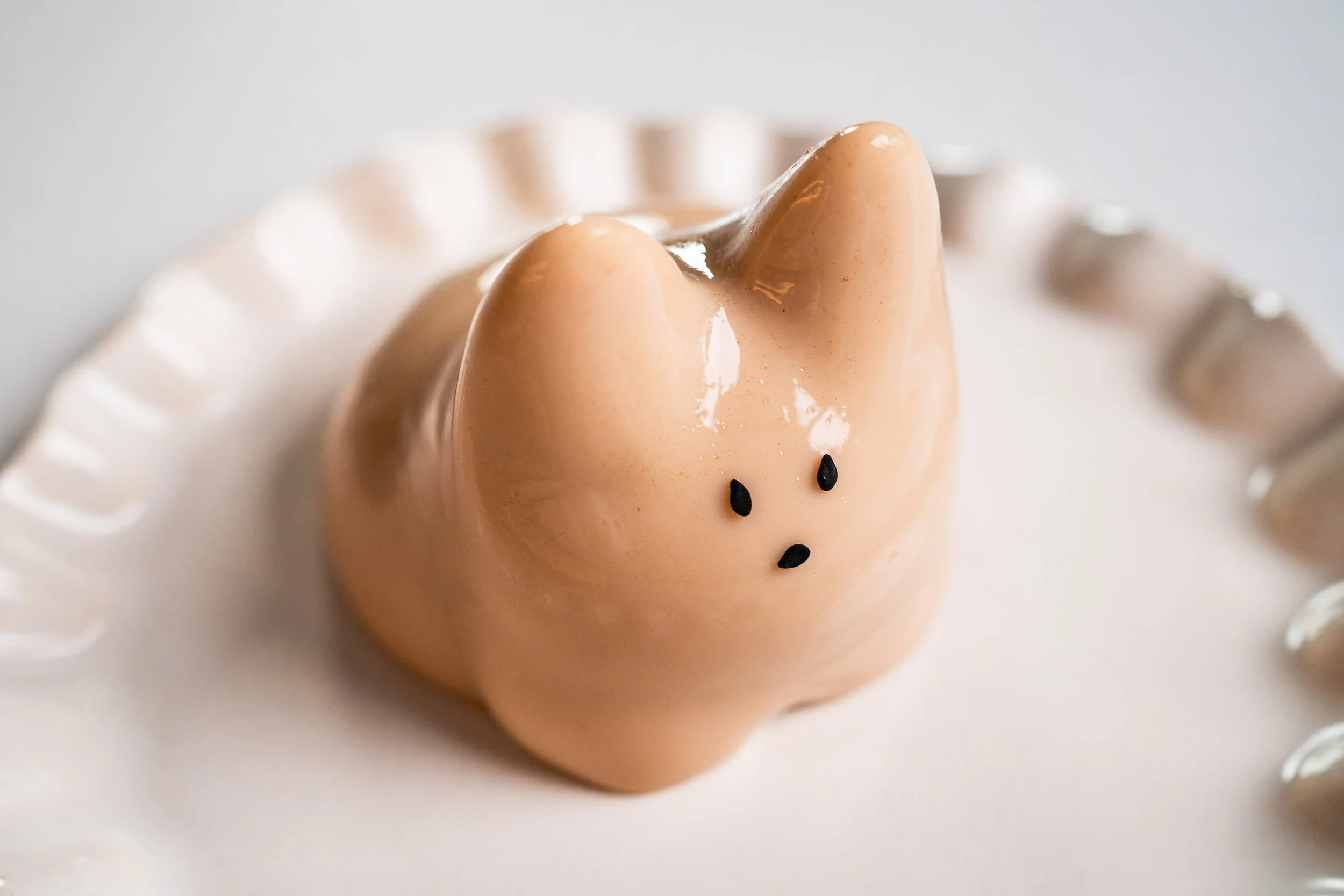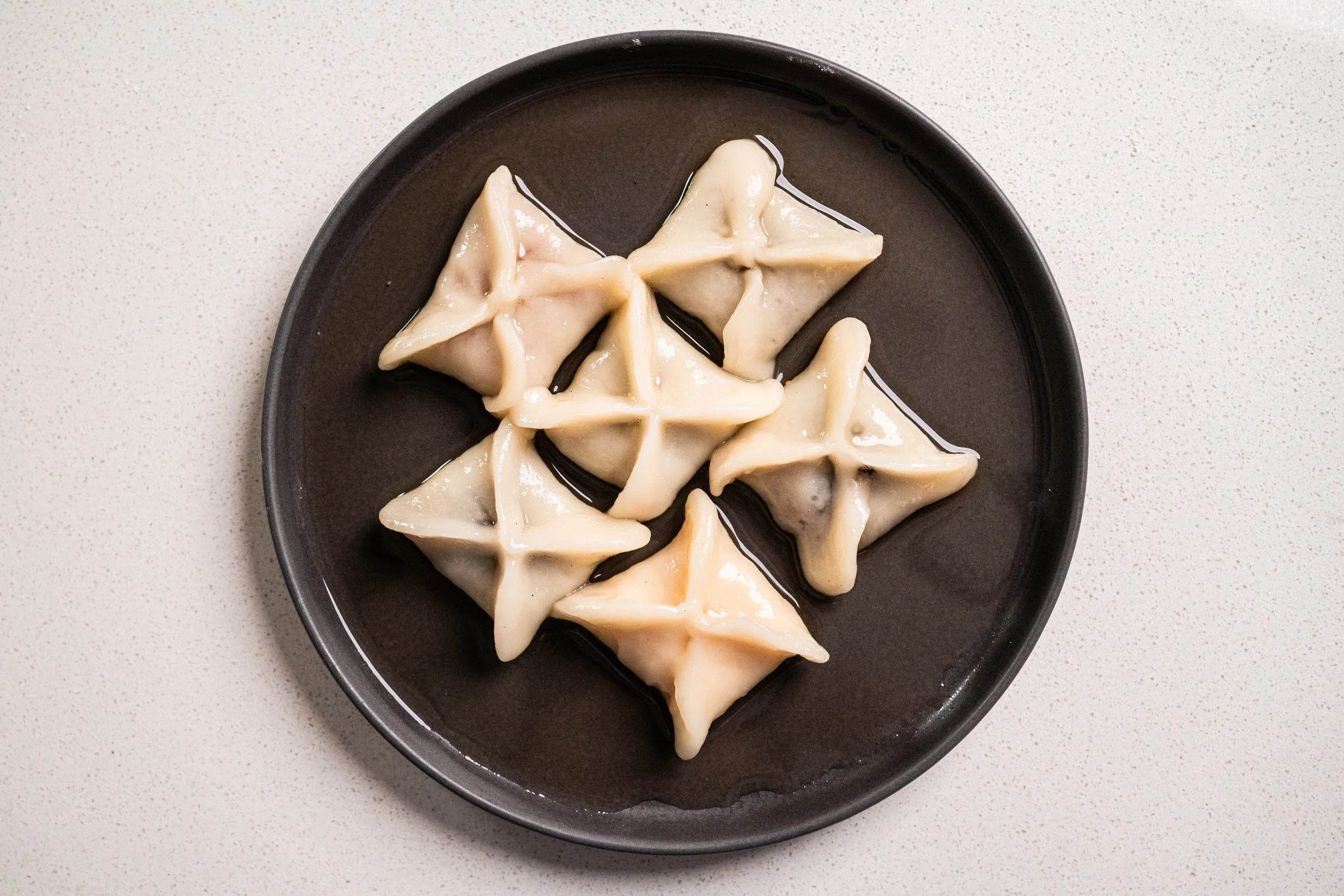Brown Sugar Bubble Tea (珍珠奶茶)
I first developed this recipe for Food52, and wrote about on the site, in hopes that people would be encouraged to make their own bubble tea at home. A part of me also hoped that Malaysians would stop bloody queuing up at Xing Fu Tang (幸福堂), The Alley, DaBoba, or the dozen other boba shops in Subang SS15, and stop clogging up the streets. (What used to be a 30-second drive through this one street now takes a constipated 15 minutes.)
While I don’t think the recipe actually altered the flow of traffic in Subang, it would be a real shame not to share this one on the blog too, because I honestly think this beats XFT’s overly milky, over-hyped drink.
So here it is. This one’s for all you boba baes and boba bros. And please, maybe just once, make your own bubble tea at home? 😋
Here’s an unpopular opinion: I hate bubble tea. Or at least, I used to.
Now, don’t get me wrong—I love my Asian milk teas, from lactose-rich Hong Kong lai chas, to foamy hōjicha lattes, to super floral Thai cha yens, to local Malaysian hawker stall teh susus. But the addition of chewy tapioca pearls (or boba) into any of these teas does nothing for me. The pearls are often gloopy, flavorless, incessantly chewy, and stick to your incisors like gum under a shoe. So despite the rise of Gong Cha, Boba Guys, CoCo, and dozens of other boba chains sprouting across cities in the U.S. and throughout the world, I always had my milk tea plain over pearled (and always with half-ice and half-sugar).
Until recently.
There was a part of me that refused to believe that all bobas were bad. Surely, I thought, there’s a milk tea out there that’s to my liking, one with bubbles so supple and flavorful, that yields under the slightest bite, like sweet little jelly balls. So call it due diligence, culinary research, or an Asian bias for boba, but I decided to give it one more try, by making my own at home. And oh, did it turn me around! I went from boba basher to boba believer.
Anyway, here’s how you make bubble tea at home:
Rolling Out The Pearls
The tapioca pearls in a typical boba are made of just three ingredients—tapioca starch, sugar, and water. It starts off as a dough, which then gets portioned and rolled into little balls. This sounds easy enough, but tapioca starch has this really sticky quality, which gives the pearls their characteristic chewiness, but it also means that a bit too much moisture in the tapioca dough will make it stick to any surface it touches, becoming nearly impossible to work with.
This is why most online recipes start off with pre-made boba pearls bought from the supermarket or your local Asian grocers, circumventing the hassle of working with tapioca starch altogether. But to me, that defeats the whole purpose of a homemade boba. So I made my own pearls, too.
After many failed attempts that left overly sticky tapioca residue all over my countertop, I found a ratio that works perfectly every time. The secret, I discovered, was to err on the side of caution and use more tapioca starch than most recipes would call for. (Working in grams instead of cups is important to get the right consistency for the dough.) This results in a much more amicable dough, which makes rolling it out into little pearls a breeze.
Tip: If you find that yours is too sticky to work with, then just try adding some more tapioca starch.
Cooking The Pearls
After rolling, the tapioca pearls are cooked in a pot of boiling water for around 15 minutes, while being constantly stirred to prevent them from sticking to each other. At most boba shops, the process ends here and the pearls are then simply plonked into milk tea and served immediately. But this doesn’t solve the problem of that typical, lackluster, flavorless pearl.
So I added an extra step to the process, one that’s very much inspired by the latest boba trend coming out of the heartland of boba, Taiwan: braised brown sugar boba. For this boba, on top of boiling the pearls, they’re cooked a second time—simmered in a thick syrup of aromatic, molasses-y brown sugar. And boy was this a game changer.
Not only does the braise add exponentially more sweet complexity and caramel-like flavor to the pearls (and by extension the drink itself), it also alters their texture. So instead of pesky little starch-balls, the pearls are softened into supple spheres oozing with syrup.
While this might seem like an extra step in the process that could technically be skipped (it would still make a boba like those served at most shops), know that in Taiwan and many parts of Asia, braised bobas have long superseded regular boba, ushering in a new age of boba bliss, because it is just that much better than regular boba. (Trust me, it’s just a matter of time before this trend hits American shores.)
Brewing The Tea
Now for the tea. Most bobas have a black tea base, and that’s how I think all boba should be had. (Some places put tapioca pearls in fruit juice and smoothies, which is all kinds of heretical.) However, if you’re not a fan of regular, bittersweet black tea, an Earl Grey or Thai tea base works really well too, adding some fruity and floral funk to the tea base.
The rest of the process is relatively simple. All you need to do here is weigh out the tea leaves, and steep it in some warm milk (as opposed to water, which would dilute the tea base), then chill it in the fridge until you need it.
Putting It All Together
There are two methods to serve up this boba. Sure, you could simply dump the pearls into the bottom of a cup, and fill it up the rest of the way with milk tea. Or you could lean into the Taiwanese trend and add a whole lot more to the finished aesthetic of your glass. At Taiwanese brown sugar boba shops like Xing Fu Tang and Tiger Sugar, they place the syrupy pearls close to the lip of a tilted cup and let the pearls slide to the bottom. As they slide, the pearls will leave a streaks of caramel, creating this trippy, tiger stripe–like ripple that makes regular servings of boba seem boring.
Whichever way you choose, you’ll still end up with a creamy, concentrated cup of tea, enriched by the sultry sweetness of the brown sugar caramel, along with an extra textural dimension from homemade tapioca pearls, which are soft, sweet, syrupy, and this time around, actually enhance the milk tea experience itself.
So despite starting out this project with little love for boba, by the end of it, it’s safe to say that I’m now on the road to becoming a boba bae.
Brown Sugar Bubble Tea (Boba)
makes 4 cups
Ingredients
Milk tea
1.5 litres milk
20g loose black tea leaves, or 4 tea bags (if you’re up for something a little different, earl grey works quite nicely too)
50g light brown sugar
Ice cubes
Tapioca pearls
65ml water
45g gula melaka, or muscovado sugar
110g tapioca starch, plus more for dusting
Braising syrup
240ml water
½ cup gula melaka, or muscovado sugar
Directions
Milk tea: Add the milk, tea leaves, and sugar into a pot, and heat it up until the milk starts to steam. Let the tea leaves steep in the hot milk for 15-20 minutes, then strain out the tea leaves. When the milk tea is cool enough, transfer it into a jug or bottle, and keep it in the refrigerator until it’s cold.
Tapioca pearls: Sift the tapioca starch and make sure no large lumps remain. Pour the water and sugar into a small pot or saucepan, and bring it to a boil. Stir and make sure all the sugar has melted, turn down the heat to low, and then dump the tapioca starch into the pot all at once. Using a firm spatula, stir the pot until everything is evenly mixed and a sticky brown dough forms. Cook this dough over very low heat for 3-5 minutes, stirring constantly to prevent the bottom from burning.
Scrape the dough out onto a clean work surface, and split it into two or three roughly equal portions. This is just to make it easier to work with. The dough will be a little sticky to start with, but should get easier to handle as it cools slightly. (If it’s still super sticky, knead in a tablespoon or two of fresh tapioca starch.) Take one of the dough portions, and cover the rest with a cloth or kitchen towel to prevent them from drying out. Then, roll out the piece you have into a long string, roughly ¼-inch thick. Using a bench scraper, cut the string into ¼-inch pieces. Roll each little piece of dough in between the palms of your hands and shape it into little spherical balls. After you roll each ball, dust it in some tapioca starch to prevent it from sticking. Repeat until you’ve rolled out all the dough.
Cooking the pearls: Ready a large pot of water, and bring it to a boil. Add in the tapioca pearls, and keep the water on a rolling boil for 20 minutes until the pearls are cooked through. Stir vigorously in the beginning to prevent the pearls from sticking, but once they start to float, you only need to stir the pot once every few minutes. Once the pearls are cooked, transfer them into a bowl of ice water to stop the cooking process and firm up slightly.
Braising the pearls: To make the braising syrup, add the water and muscovado sugar in a small pot, and bring to a boil. Add in the chilled tapioca pearls, and turn the heat down to a slow simmer. Let the pearls braise for 20-25 minutes, until the braising liquid turns thick and syrupy. Keep it warm after it’s done cooking.
Serving: To serve, tilt the glass or cup at a 45° angle, and place the tapioca pearls close to the lip of the glass, letting them slide down to the base. Repeat this on all sides to get a trippy, tiger stripe-like ripple effect, then add the ice cubes and milk tea. It’s best to drink it with a straw so you can get at the pearls as you drink the tea.











